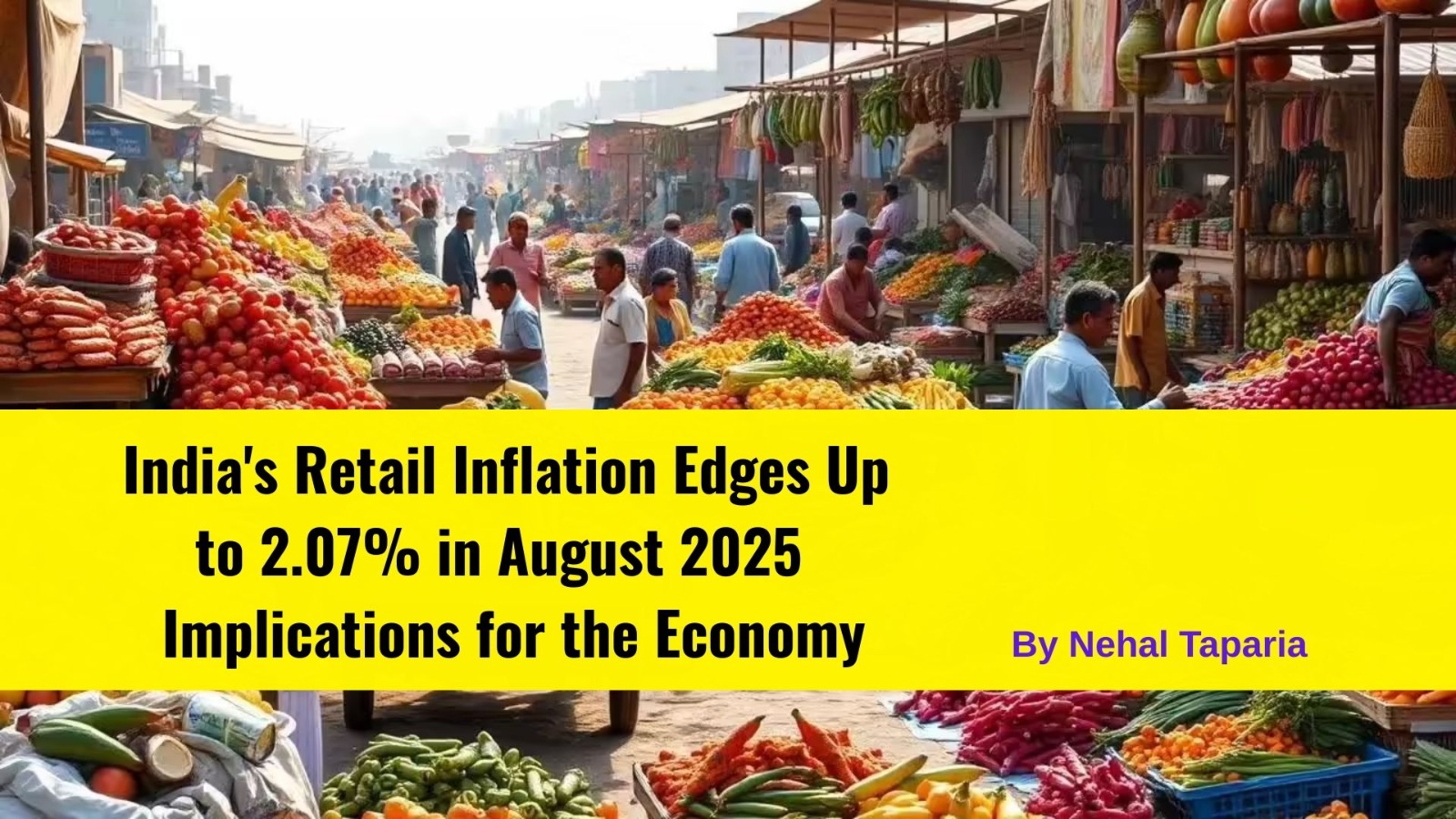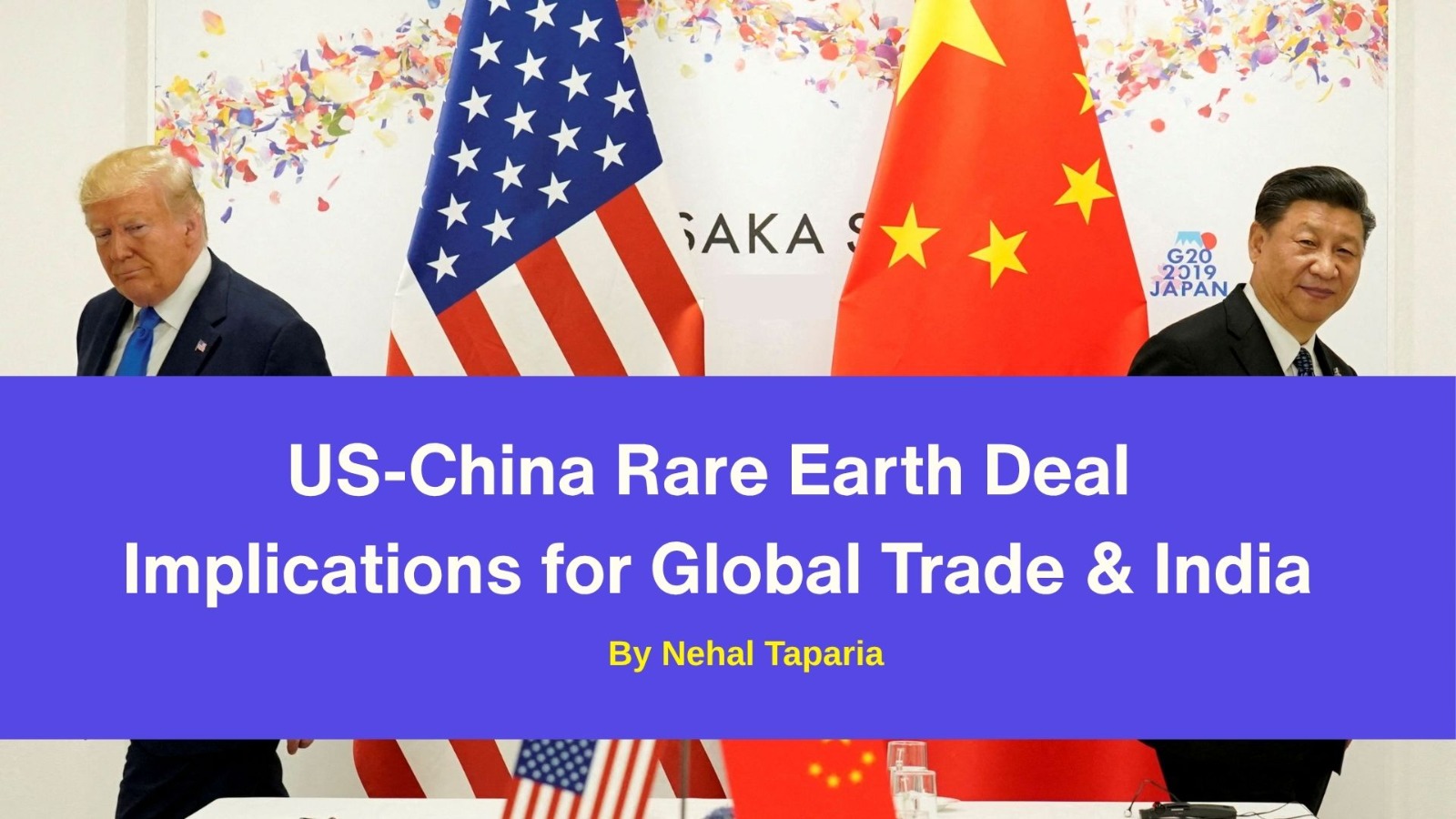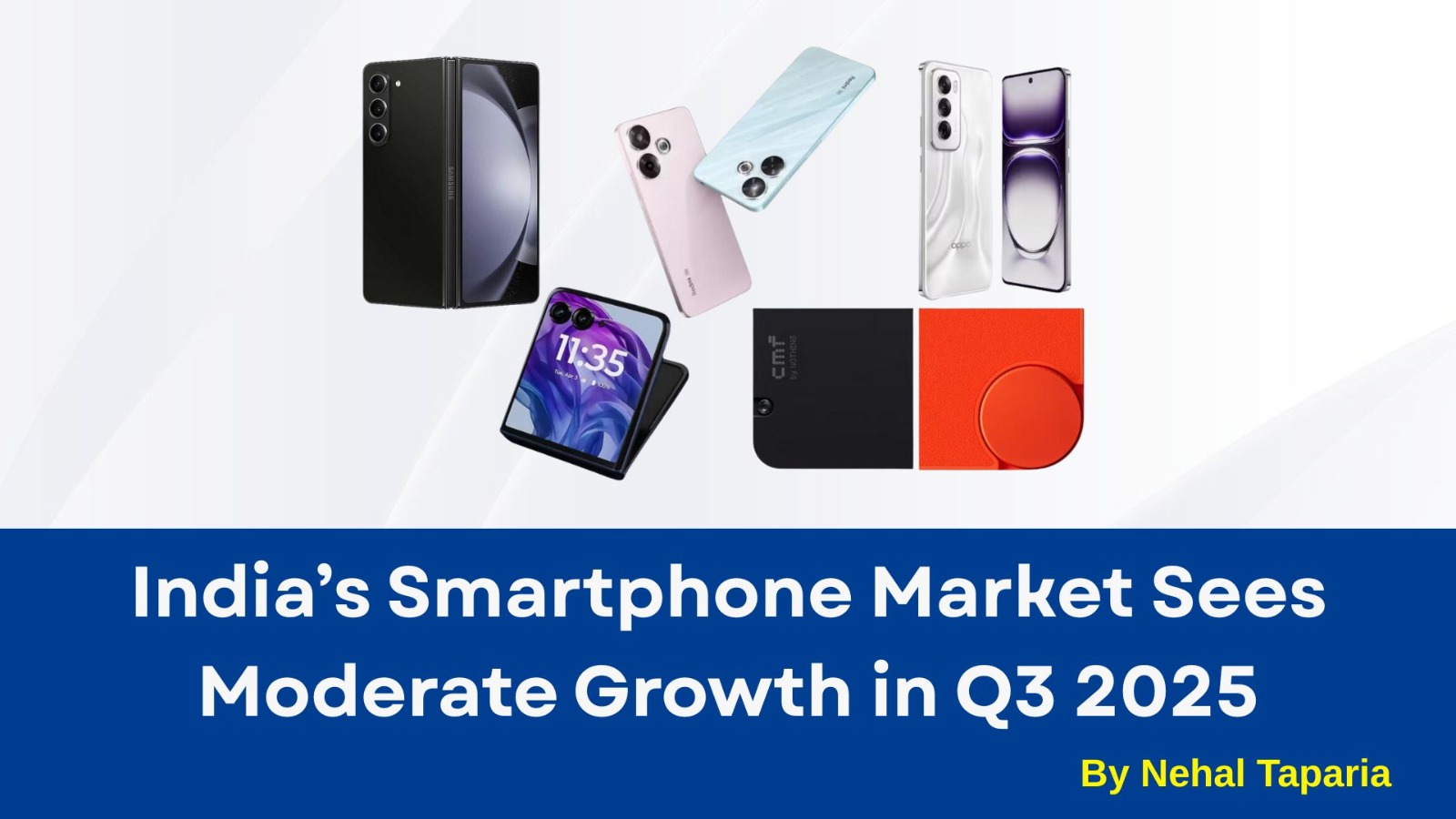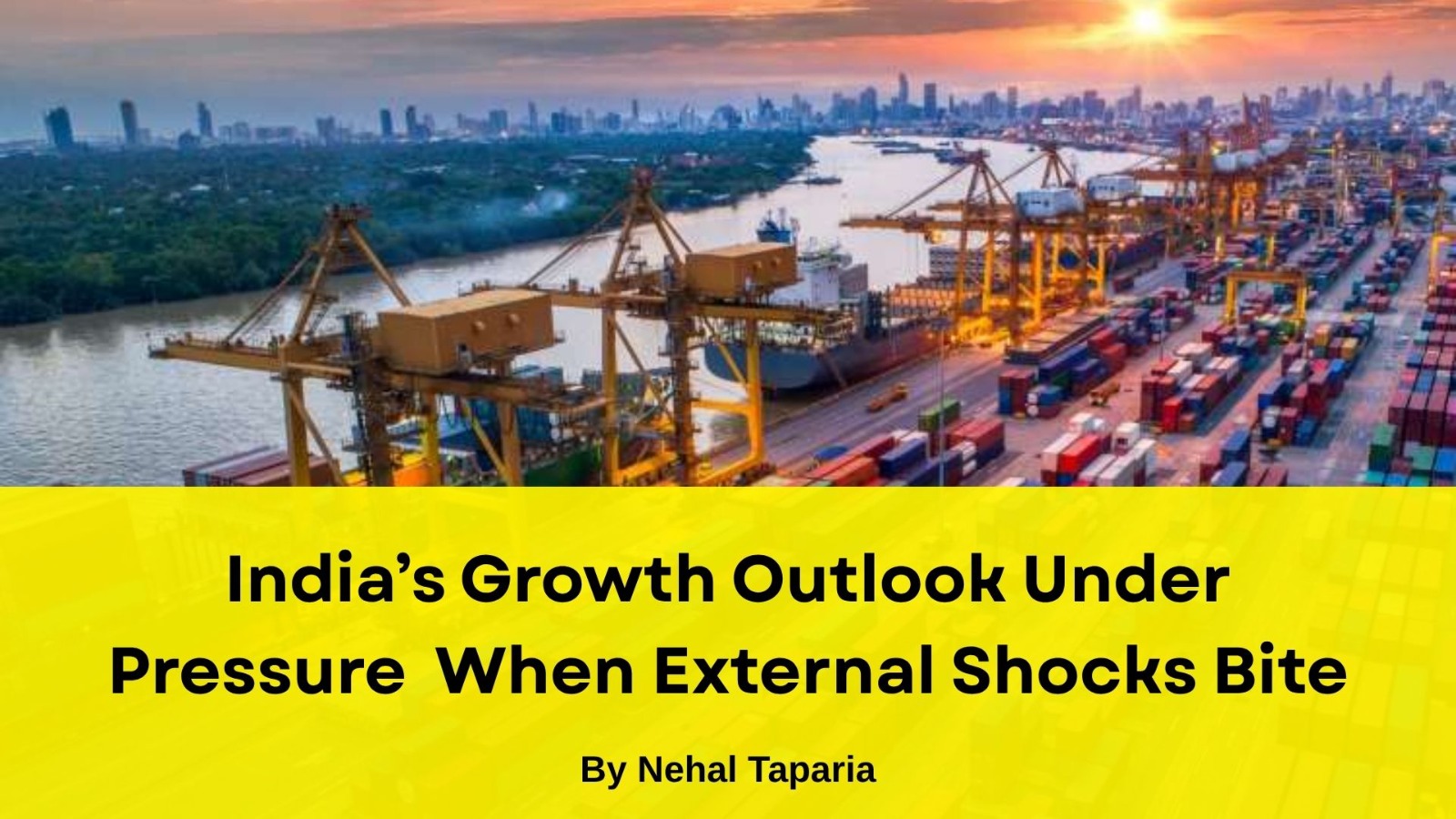India's Retail Inflation Edges Up to 2.07% in August 2025 – Implications for the Economy

India's Retail Inflation Edges Up to 2.07% in August 2025 – Implications for the Economy
Overview of August 2025 Inflation Data
India's retail inflation, as measured by the Consumer Price Index (CPI), increased to 2.07% in August 2025, up from 1.61% in July. This uptick is primarily attributed to rising prices in essential items such as vegetables, meat, fish, oils and fats, and personal care products .
Despite this rise, inflation remains well within the Reserve Bank of India's (RBI) target range of 2% to 6%, indicating stable price levels in the economy.
Key Drivers of Inflation
Vegetables: Prices increased by 15.92% in August, compared to a 20.69% rise in July.
Meat and Fish: Experienced a noticeable price hike during the month.
Oils and Fats: Saw a significant increase of 21.2%.
Personal Care Products: Prices rose by 16.6%.
These increases have contributed to the overall rise in inflation, though food inflation remains negative at -0.69% year-on-year .
Core Inflation and Rural-Urban Disparities
Core Inflation: Excluding volatile items like food and energy, core inflation stood at 4.1% in August, slightly up from 4% in July.
Rural Inflation: Increased to 1.69% from 1.18% in July.
Urban Inflation: Rose to 2.47% from 2.1% in the previous month.
These figures suggest that while overall inflation remains under control, certain sectors and regions are experiencing price pressures.
Implications for the Indian Economy
Monetary Policy: The current inflation rate provides the RBI with room to maintain its accommodative monetary policy stance.
Interest Rates: Analysts anticipate that the RBI may continue to keep interest rates steady, supporting economic growth.
Consumer Spending: Stable inflation supports consumer confidence and spending, which is crucial for economic recovery.
In conclusion, while India's retail inflation has seen a modest increase in August 2025, it remains within the RBI's target range, suggesting a stable economic environment. Continued monitoring of price trends and government policies will be essential to maintain this stability.
By Nehal Taparia
This content is for educational and knowledge purposes only and should not be considered as investment or Trading advice. Please consult a certified financial advisor before making any investment or Trading decisions.
Our Recent FAQS
Frequently Asked Question &
Answers Here
Q1: What caused the rise in inflation in August 2025?
The increase was primarily due to higher prices in essential items such as vegetables, meat, fish, oils and fats, and personal care products .
Q2: How does this impact the Reserve Bank of India's monetary policy?
Q3: What is core inflation, and how did it change?
Q4: Are there regional differences in inflation rates?
Q5: What is the outlook for inflation in the coming months?
Copyright © By The Stock Learning. Design & Developed by Techno Duniya










